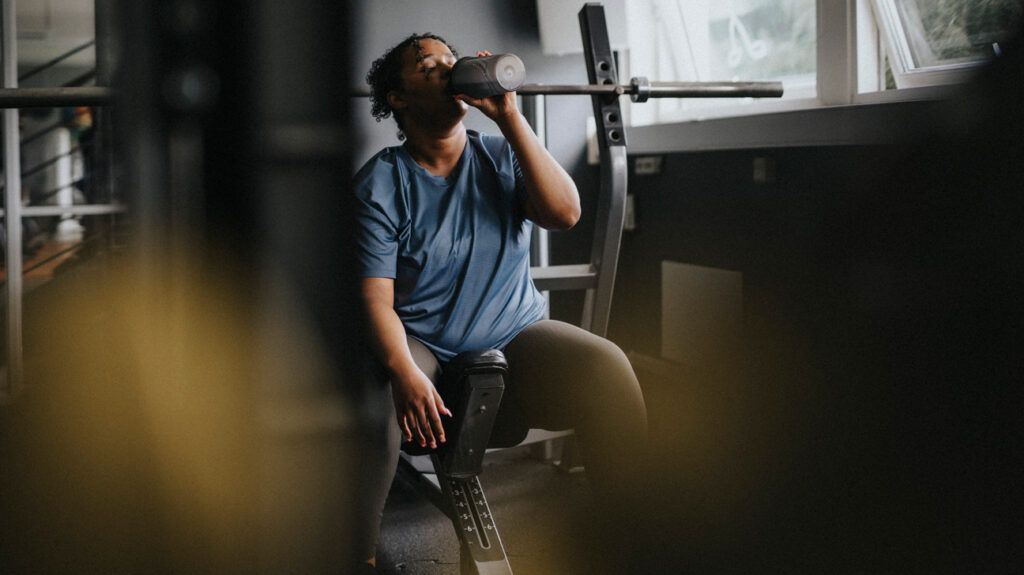Some types of exercise are more likely to cause diarrhea after working out than others. People can help prevent diarrhea after exercising with some treatments, strategies, and diets.
Working out
People with diarrhea pass stools three or more times a day. Acute diarrhea may last for 1–2 days before going away. Other forms of diarrhea may last for weeks or become chronic.
According to the National Institute of Diabetes and Digestive and Kidney Diseases, about
Physical activity is when a person moves to work their muscles and uses more energy than while resting. People often work out to
This article discusses the connection between diarrhea and physical activity and the causes of diarrhea after exercise. It also discusses management and prevention tips, plus when to speak with a doctor.

As people exercise, their bodies respond in several complex ways. Some of these responses can
- Redirected blood flow: When a person exercises, blood flows to their muscles, limbs, and circulatory system instead of their digestive system. This can cause diarrhea.
- Hormonal activity: Chemicals called hormones regulate different bodily functions. During exercise, a person’s body releases some hormones that reduce the capacity of the gastrointestinal system.
Exercise can also affect the organs in a person’s abdomen through physical effects such as:
- jarring, jolting, or sudden impacts
- a person’s body position
- friction
These effects may lead to a person having symptoms, including diarrhea. Scientists call these symptoms exercise-induced gastrointestinal distress (EIGD) or exercise-induced gastrointestinal syndrome (EIGS).
Types of exercise that cause EIGS
Diarrhea from EIGS often affects people during endurance exercises, such as long-distance cycling or running. Other types of exercise that put pressure on a person’s digestive organs may cause gastrointestinal symptoms, such as diarrhea. These types of exercise can include any that work out a person’s abdominal muscles.
Pregnant people
Dehydration
Exercise can cause people to lose water and fluid through sweating. They may have an electrolyte imbalance if they do not replace these fluids through hydration.
Electrolytes are salts and minerals in a person’s blood. There appears to be little recent scientific investigation into electrolyte imbalance and diarrhea. However, losing water and fluids through exercise can cause dehydration and diarrhea.
Learn more about dehydration and diarrhea.
Scheduling workouts after bowel movements may help a person manage diarrhea. People can also reduce the intensity or duration of their workouts. In a 2022 study of EIGS in runners, scientists found that running further distances increased how often a person had diarrhea.
Food
Easily digestible foods can help people
The bland diet does not have raw or uncooked foods. Instead, it includes:
- low fat dairy products
- eggs
- broth
- certain fruit juices
- cream of wheat
- tofu
- lean meat such as:
- skinless chicken
- fish
- bland vegetables such as:
- tea
Learn more about hydrating foods.
Medication
Some over-the-counter medications can aid people when they are
- loperamide (Imodium)
- bismuth subsalicylate (Pepto-Bismol)
Only certain kinds of infectious diarrhea are
- beverages containing alcohol
- foods or beverages containing caffeine
- dairy products, such as:
- milk
- cheese
- ice cream
- fatty or greasy foods
- high fiber foods
- carbonated drinks
- spicy foods
- fruits, such as:
- apples
- peaches
- pears
- foods or drinks containing fructose
- drinks or products that contain sweeteners, such as:
- sorbitol
- mannitol
- xylitol
Some medications can
Wearing loose-fitting clothing during exercise may help a person avoid diarrhea. Tight-fitting clothing may
However, there appears to be little recent research into clothing that can help prevent diarrhea after or during exercise. Some research from 2022
Learn more about how to stop diarrhea fast.
If diarrhea
- diarrhea that lasts for more than 2 days
- a fever of 102oF (39oC) or greater
- frequent vomiting
- six or more loose stools in a day
- severe pain in both or either of their:
- abdomen
- rectum
- stools that are black and tarry
- stools that contain blood or pus
- dehydration symptoms
Some forms of physical activity, such as endurance exercise, can make a person more likely to have diarrhea. People can prevent diarrhea after working out by avoiding certain types of food and clothing. They can also manage diarrhea with medications and workout scheduling strategies.
Diarrhea may cause dehydration. It can also be a symptom of a more serious condition. People should seek professional medical advice if they have certain diarrhea symptoms.
